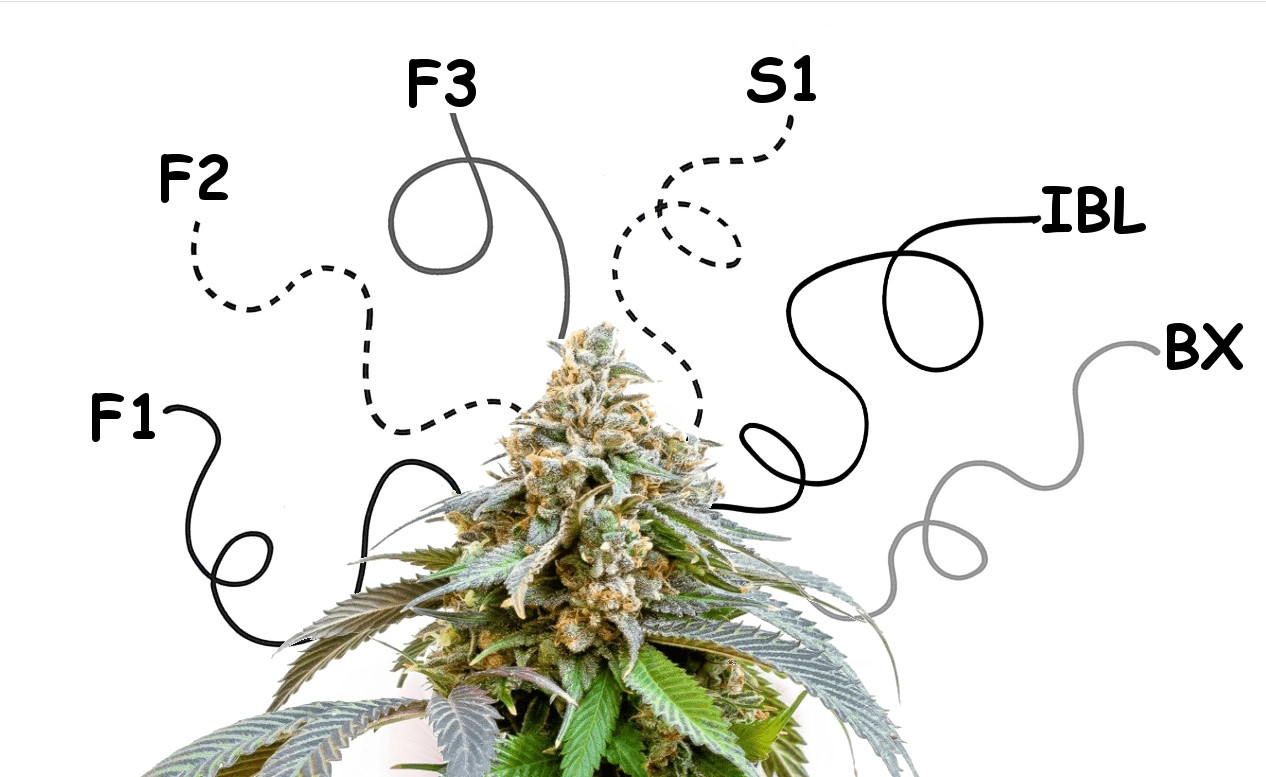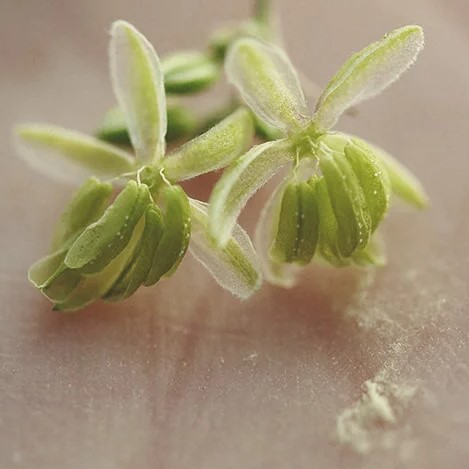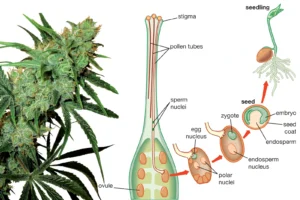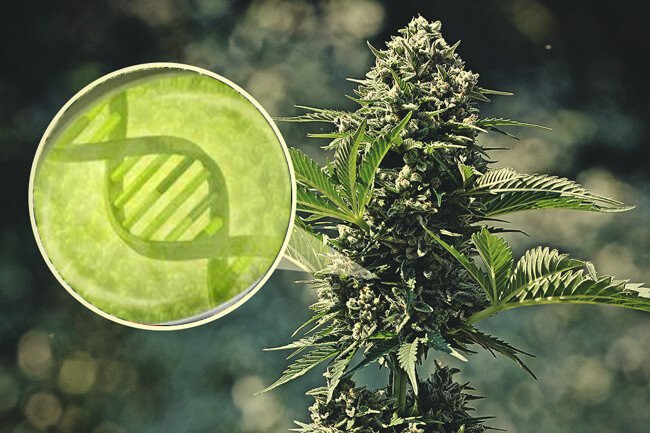When it comes to cannabis breeding, there are several terms that are commonly used, such as F1-F2-F3-IBL, S1 and BX. These terms refer to different generations of cannabis seeds and can provide insight into the genetic makeup and stability of the plants they produce. In this comprehensive guide, we will explore the differences between F1-F2-F3-IBL, S1 and BX cannabis strain seeds, and how they are created through selective breeding and hybridization.
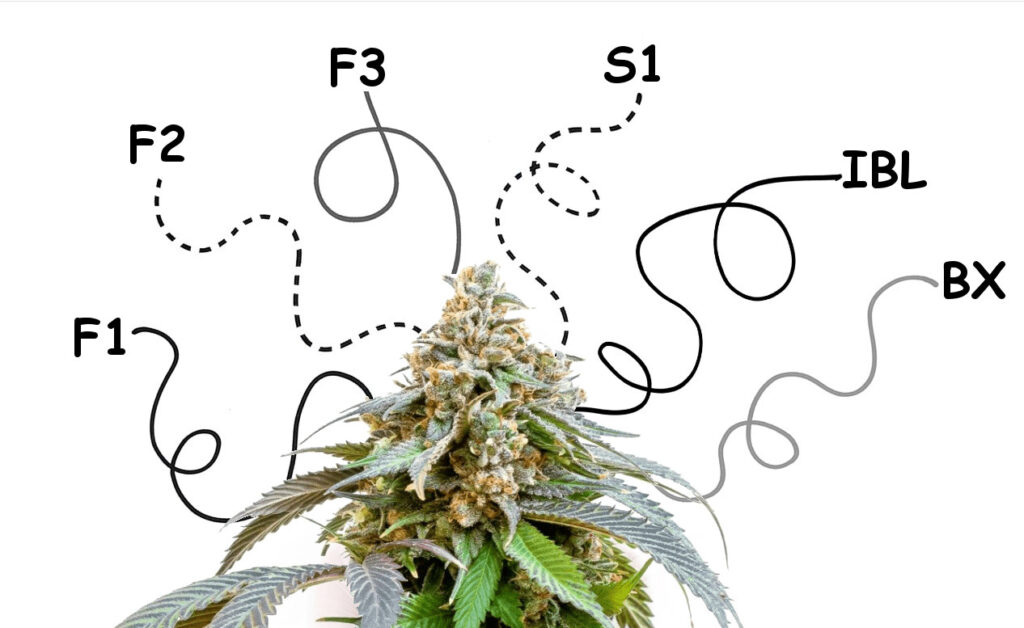
The Basics of Cannabis F1-F2-F3-IBL, S1 and BX Breeding
Before diving into the specifics of F1-F2-F3-IBL, S1 and BX seeds, it’s important to understand the basics of cannabis breeding. Breeding is the process of crossing different cannabis plants to create offspring with desired traits. This can involve selecting plants with specific characteristics, such as high THC levels, unique flavors, or resistance to pests and diseases.
During the breeding process, pollen from a male cannabis plant is used to fertilize the flowers of a female cannabis plant. This results in the production of seeds that carry genetic traits from both parent plants. By carefully selecting the parent plants and controlling the breeding process, breeders can create new cannabis strains with desired characteristics.
Generational Seed Chart
| Seed Generation | Description | Characteristics |
|---|---|---|
| F1 Seeds | Result of crossing two different parent strains | Stable, uniform, and a combination of traits from parents |
| F2 Seeds | Second generation, result of crossing F1 plants | Wider range of genetic variations, less stable |
| F3 Seeds | Third generation, refined through selective breeding of the F2 Generation | More stable, increased predictability |
| S1 Seeds | Self-pollinated seeds, offspring of a single parent plant | Similar to the original female plant |
| IBL Seeds | Inbred Line seeds, result of inbreeding over multiple generations | Highly stable and predictable, result of inbreeding |
| BX Seeds | Backcross seeds, involves crossing a hybrid plant with one of its parent plants or a plant with very similar genetics. | Enhanced stability, preservation of specific traits |
F1 Cannabis Strain Seeds
F1 stands for “first generation.” and are the result of crossing two different parent strains. These seeds exhibit a combination of traits from both parent plants and are typically stable and uniform. The offspring produced from F1 seeds will have similar characteristics and are often highly sought after by growers.
To create F1 seeds, breeders carefully select two parent plants with desirable traits. These parent plants can be different strains or varieties of cannabis. By crossing these plants, breeders can create offspring that exhibit a combination of the best traits from both parents. F1 seeds are considered stable and reliable, making them popular among growers.
F2 Cannabis Strain Seeds
F2 seeds are the second generation of seeds produced by crossing F1 plants. When F1 plants are crossed with each other, the resulting offspring will have a more diverse genetic makeup compared to F1 seeds. This is because the F2 generation can exhibit a wider range of genetic variations due to genetic recombination.
While F2 seeds can produce plants with a wider range of traits, they are also less stable compared to F1 seeds. This means that the offspring may not consistently exhibit the desired traits of the parent plants. However, the F2 generation also presents an opportunity for breeders to discover new and unique traits that can be further selected and stabilized in future generations.
F3 Cannabis Strain Seeds
The F3 generation represents the third generation of seeds produced through selective breeding. By crossing F2 plants with each other and selecting offspring with desired traits, breeders can continue to refine and stabilize the characteristics of the strain. The F3 generation is typically more stable than the F2 generation, with offspring that are more likely to consistently exhibit the desired traits.
During the F3 generation, breeders focus on reducing genetic variations and narrowing down the phenotypes of the plants. By selecting and crossing plants with similar traits, breeders can create a more uniform and stable strain. This process requires careful observation and selection over multiple generations to achieve the desired results.
S1 Cannabis Strain Seeds
S1 seeds, also known as selfed seeds or self-pollinated seeds, are produced through a process called selfing. Selfing involves taking a cutting or clone from a female cannabis plant and inducing it to produce male flowers. The pollen from these male flowers is then used to pollinate the original female plant, resulting in S1 seeds.
S1 seeds are unique because they are essentially the offspring of a single parent plant. This means that the genetic makeup of S1 seeds is very similar to the original female plant. S1 seeds can be advantageous for breeders who want to preserve and stabilize the characteristics of a particular strain.
Inbred Line (IBL) Cannabis Strain Seeds
When breeders work with IBL seeds, they are cultivating plants that are essentially genetically identical. This ensuring a high degree of uniformity in each generation. The emphasis here is on locking in specific traits, whether it be potency, flavor, or growth characteristics. The repetitive inbreeding process aims to eliminate genetic variations and create a lineage that reliably produces offspring with the desired attributes.
The advantages of IBL seeds lie in their predictability and stability. By utilizing IBL seeds, breeders can consistently reproduce cannabis plants that showcase the defined characteristics of the chosen strain. This is particularly valuable for those looking to maintain a specific set of traits over time without the variability introduced by hybridization.
Creating an IBL strain involves meticulous selection and breeding, often requiring multiple generations of inbreeding to achieve the desired level of genetic stability. While it may demand more time and expertise, the end result is a strain that maintains its unique qualities with remarkable consistency.
In conclusion, Inbred Line (IBL) seeds offer breeders a pathway to create cannabis strains with unparalleled stability and predictability. As the cannabis breeding landscape continues to evolve, the inclusion of IBL seeds in breeding programs contributes to the cultivation of strains that remain true to their genetic blueprint. This dedication to purity ensures that the legacy of each strain is preserved and passed on through generations of cannabis enthusiasts and cultivators.
BX(Backcrossed seeds)
BX seeds, short for “Backcross seeds,” are a type of cannabis seed resulting from a breeding technique called backcrossing. Backcrossing involves crossing a hybrid plant with one of its parent plants or a plant with very similar genetics. The goal is to reintroduce specific traits from the original parent plant back into the hybrid offspring.
The term “BX” is followed by a number, indicating how many generations of backcrossing have occurred. For example, BX1 signifies the first generation of backcrossing, BX2 the second, and so on.
The primary purpose of using backcrossing in cannabis breeding is to stabilize and reinforce desired traits from the original parent plant. This technique helps to address any dilution or loss of specific characteristics that may occur when creating hybrid strains. By repeatedly crossing with the original parent, breeders aim to achieve a balance between maintaining desired traits and preserving the advantages of hybrid vigor.
BX seeds can offer a more predictable and stable outcome compared to F2 or F3 seeds, as the genetic influence of the original parent plant is emphasized and maintained through multiple generations of backcrossing. This makes them valuable in the development of cannabis strains with specific, consistent characteristics.
Creating New Cannabis F1-F2-F3-IBL Strains
Creating a new cannabis strain involves a combination of selective breeding, hybridization, and stabilization. Breeders start by selecting parent plants with desirable traits, such as high THC levels, unique flavors, or specific growth characteristics. These parent plants are then crossed to create F1 seeds.
Once the F1 seeds are obtained, breeders evaluate the offspring and select plants with the desired traits for further breeding. This process is repeated over multiple generations, with each generation becoming more stable and uniform. Breeders may also introduce additional crosses and backcrosses to enhance specific traits or introduce new genetics.
The goal of creating a new cannabis strain is to develop a stable and consistent variety that reliably exhibits the desired traits. This requires careful selection, observation, and breeding over several generations. The resulting strain can then be propagated through seeds or cloning to maintain its unique characteristics.
F1-F2-F3-IBL Hybrid Cannabis Strains
Hybrid cannabis strains are the result of crossing different varieties or species of cannabis. These hybrids can exhibit a combination of traits from both parent plants, resulting in unique and diverse characteristics. Hybridization allows breeders to create strains with specific effects, flavors, or growth characteristics.
There are three main types of hybrid cannabis strains: indica-dominant, sativa-dominant, and balanced hybrids. Indica-dominant hybrids typically have relaxing and sedating effects, while sativa-dominant hybrids are known for their energizing and uplifting effects. Balanced hybrids combine the characteristics of both indica and sativa strains.
Hybrid cannabis strains can provide a wide range of effects and flavors, making them popular among recreational and medical cannabis users. The specific traits and characteristics of a hybrid strain depend on the parent plants used in the cross and the breeding goals of the breeder.
Stabilizing Cannabis Strains
Stabilizing a cannabis strain involves creating a uniform and consistent variety that reliably exhibits the desired traits. This process requires careful selection and breeding over multiple generations to eliminate genetic variations and produce offspring that consistently resemble the parent plants.
To stabilize a strain, breeders typically start with F1 seeds and select plants that exhibit the desired traits. These selected plants are then crossed with each other or backcrossed with the original parent plants to reinforce the desired characteristics. This process is repeated over several generations until the offspring consistently exhibit the desired traits.
Stabilizing a strain can take several years and requires patience, observation, and careful selection. Breeders must closely monitor the offspring and select plants that exhibit the desired traits while eliminating those that do not meet the criteria. Through this process, breeders can create stable and reliable cannabis strains.
The Importance of Selecting Quality F1-F2-F3-IBL Seeds
When it comes to breeding and growing cannabis, the quality of the seeds is crucial. High-quality seeds with good genetic integrity and viability are essential for producing healthy and vigorous plants. Breeders should source their seeds from reputable seed banks or breeders known for their quality genetics.
It’s important to choose seeds that are fresh, properly stored, and produced by reliable breeders. High-quality seeds have a higher chance of producing desirable traits and stable offspring. Additionally, reputable breeders often provide detailed information about their strains, including genetic lineage, characteristics, and growing recommendations.
By selecting quality seeds, breeders can start their breeding programs on the right foot. This will increase their chances of success in producing stable and high-performing cannabis strains.
Conclusion
Understanding the differences between F1-F2-F3-IBL and S1 cannabis strain seeds is essential for breeders and growers alike. These terms represent different generations of seeds and provide insights into the genetic makeup and stability of the plants they produce.
F1 seeds are the first generation of seeds produced by crossing two parent strains and are typically stable and uniform. F2 seeds result from crossing F1 plants and exhibit a wider range of genetic variations. F3 seeds represent the third generation and are more stable compared to F2 seeds. S1 seeds are self-pollinated seeds that closely resemble the original parent plant. IBL seeds are cannabis plants that are essentially genetically identical, ensuring a high degree of uniformity in each generation. BX (Backcrossing) breeding involves crossing a hybrid plant with one of its parent plants or a plant with very similar genetics. The goal is to reintroduce specific traits from the original parent plant back into the hybrid offspring.
When embarking on a breeding program, it’s important to choose quality seeds from reputable sources. High-quality seeds have a higher chance of producing healthy plants with desirable traits. By understanding the differences between F1-F2-F3-IBL, S1 and BX seeds, breeders can make informed decisions and increase their chances of success in creating new cannabis strains.

